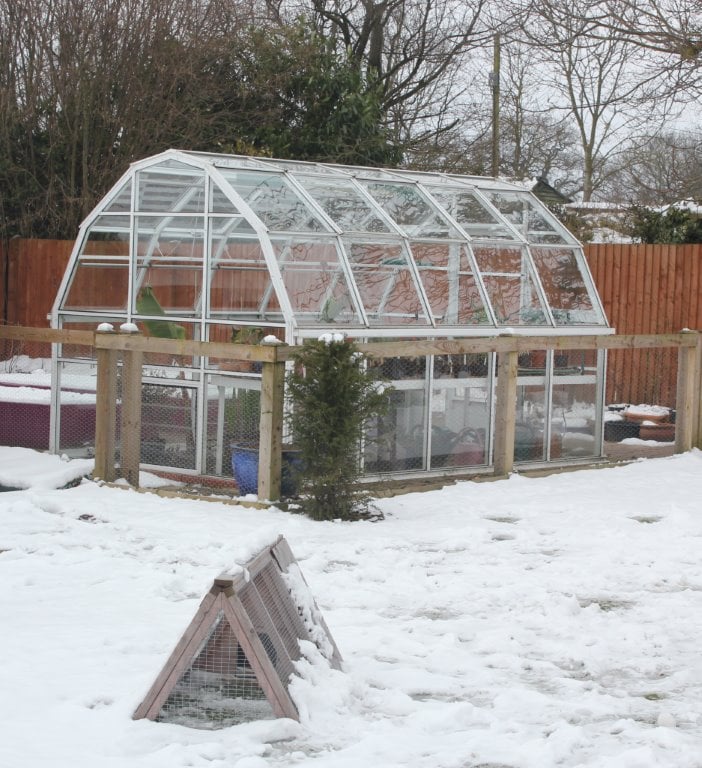No one ever could have predicted that March would end up as it did – certainly not me! All of last month’s optimism, about it ‘coming in like a lion and going out like a lamb’, totally demolished by a avalanche of snow and sub zero temperatures. The beginning of April looks like it will be cold, too!
Thank goodness, we can reduce the impact by seed sowing in the greenhouse. Vegetables can be started in modules or small pots, so there is a still chance to get ahead. The only problems we face are the low light levels and lack of sunshine, so don’t raise temperatures too high after germination or plants will become spindly.

Sow lettuce, celeriac, onions, broad beans, early, mid and main-crop peas, French beans in a frost free greenhouse. Round rooted carrots like ‘Parmex’, baby beet eg. ‘Pronto’ or other round varieties can be sown in 3-5” pots then transplanted ‘in the round’, like a cluster of eggs, after ‘hardening off’. Do this by putting them outdoors during the daytime and bringing them in for 7-10 days, in a sheltered spot, before transplanting in the vegetable garden. Parsnips can be sown in multi-purpose compost in ‘Rootrainers’ or the cardboard tubes from toilet rolls, before transplanting once conditions improve.
Although I should be encouraging you to grow as much as possible to from seed, many companies now sell either plug or small bedding and vegetable plants which can then be grown on until planting size. Search the internet and you will find an incredible range of vegetables available from the seed companies – particularly tender crops like tomatoes, peppers and bedding plants. Growers produce plants on a large scale, making it more cost effective than heating a greenhouse for a few plants. I often buy plantlets for growing onm then space in the greenhouse can then be used for growing other plants.
Sweetcorn can be sown one seed per cell, burying the seed at its own depth in multipurpose compost. They soon germinate and can be planted out, when they are 3-5” tall if the soil is warm enough, if not, repot, then grow on in the glasshouse, until they are 8” tall. Don’t plant them outdoors too early, as they need warmth to grow.
Brassicas like Brussels sprouts, cabbage and Cauliflowers are better home sown, to avoid introducing ‘clubroot’ or buy them from a reliable source. Sow seeds in soil-less compost. If the stems become ‘leggy’ because light levels are low, they can be planted at a depth where their leaves are just below the soil surface, as they naturally produce roots along their buried stems. Let’s hope that by the next time I write, spring will have finally arrived! Brrrr!Sowing of Marrows, courgettes, squashes, cucumbers and pumpkins should be timed to miss the last frosts, planting them out in late spring or early summer. Sow two seeds on edge in 31/2” pots (sowing on edge means they are less prone to rotting) then remove the weakest seedling. They can be potted on into 5” pots and grown on until the weather is warm enough for them to be ‘hardened off’ and planted out.
Happy Gardening!
Matt


